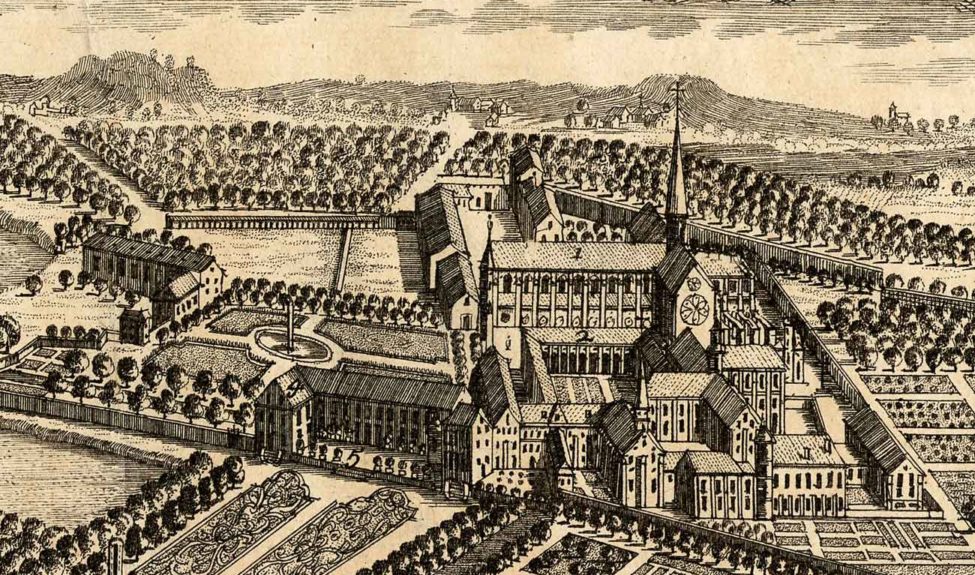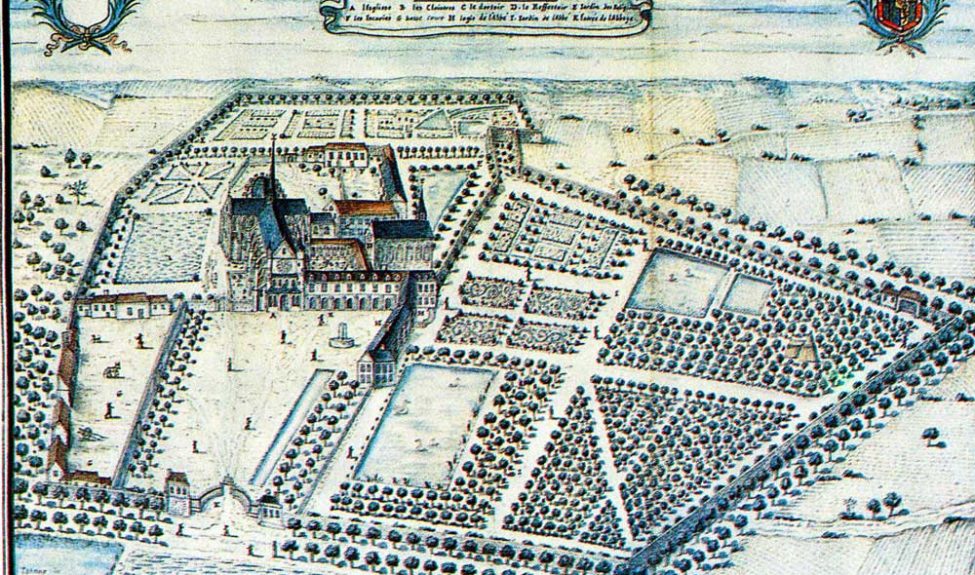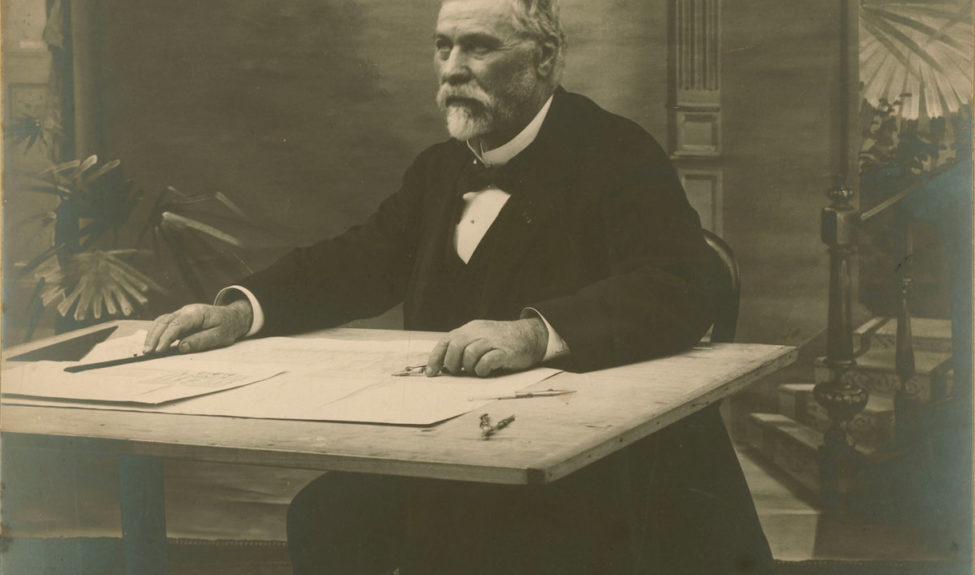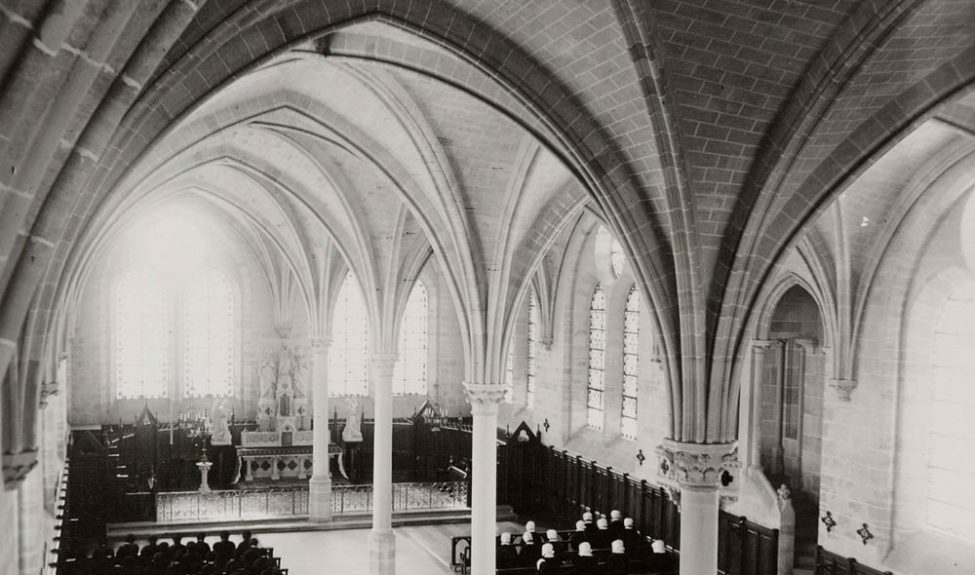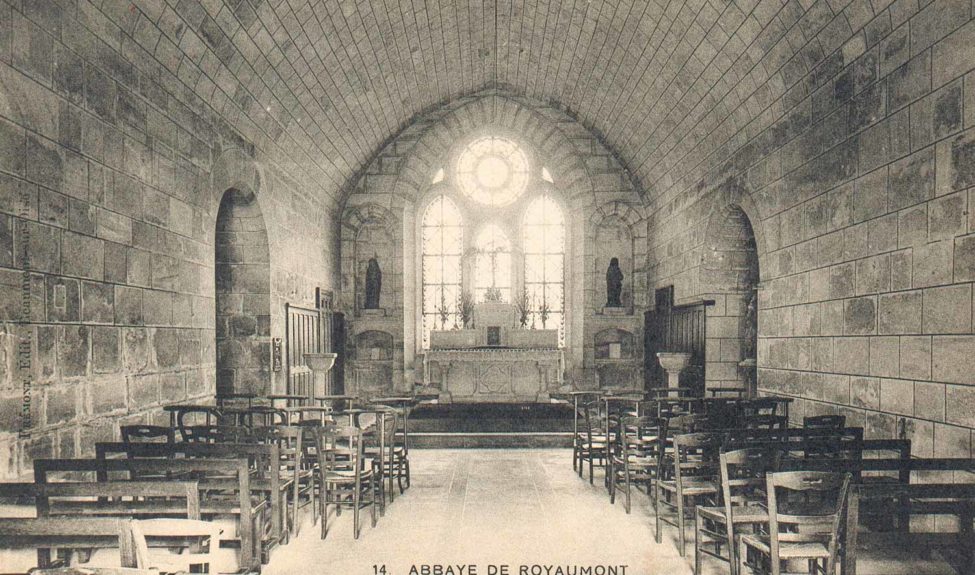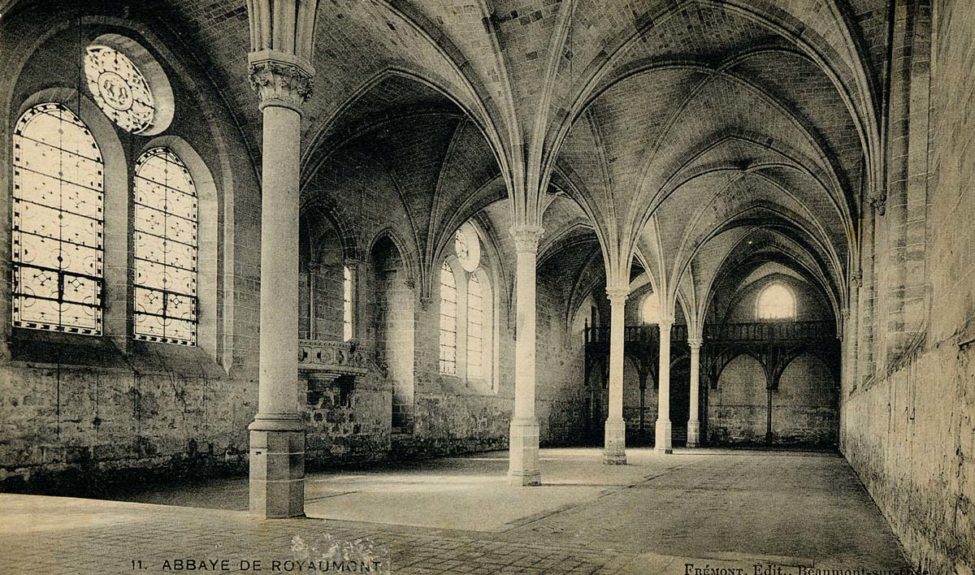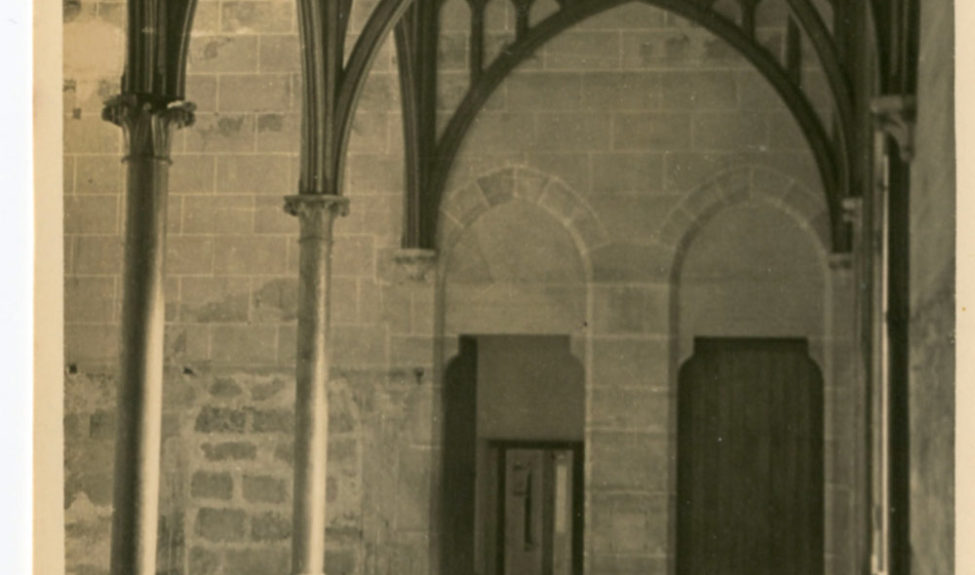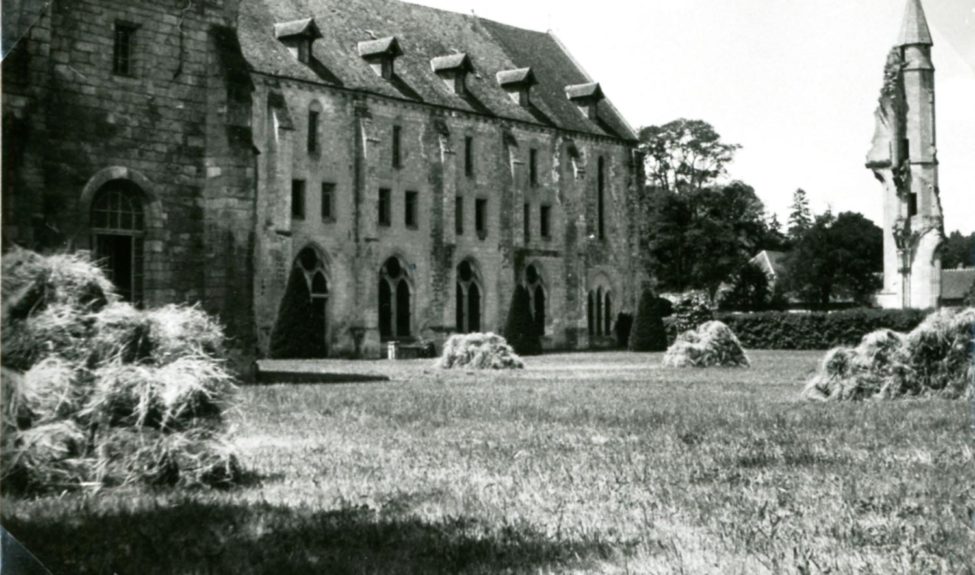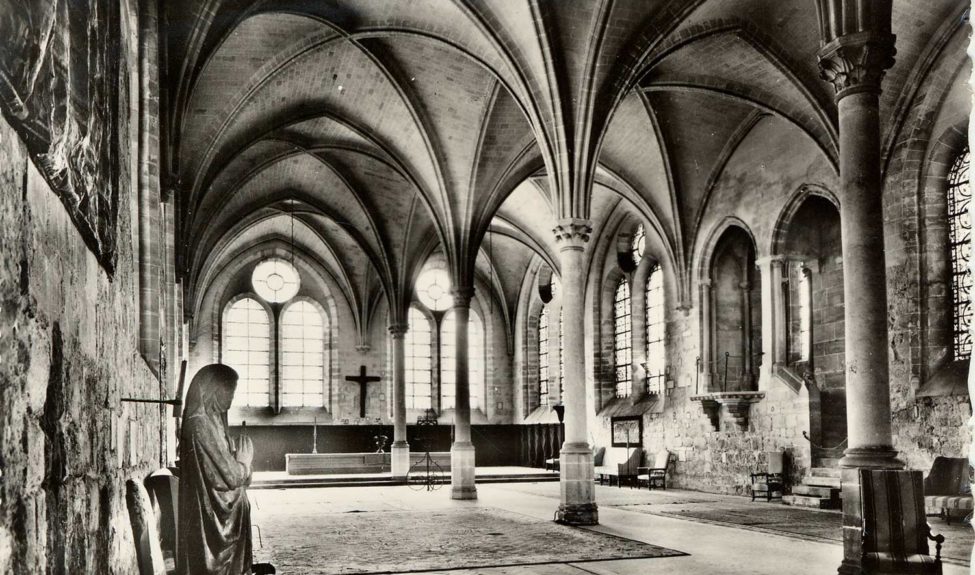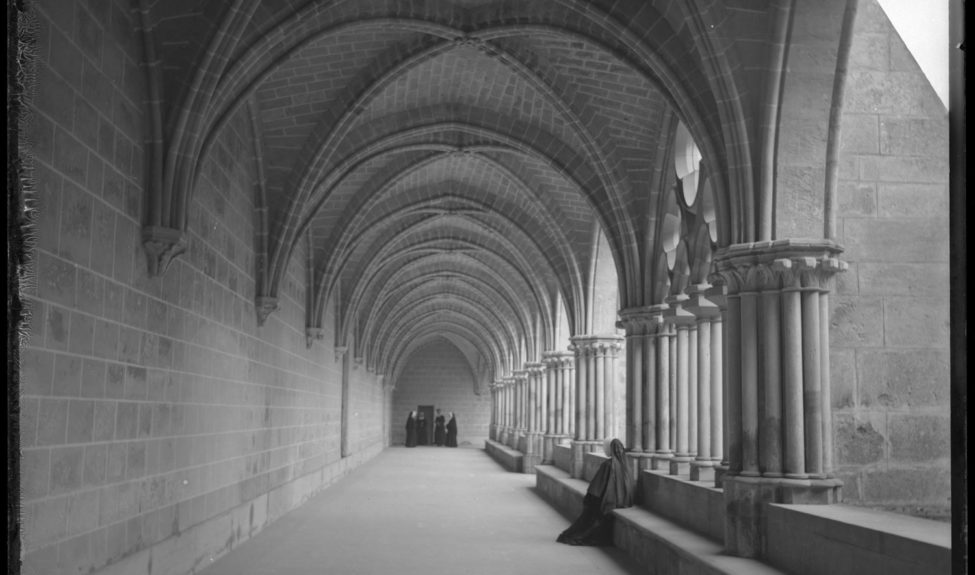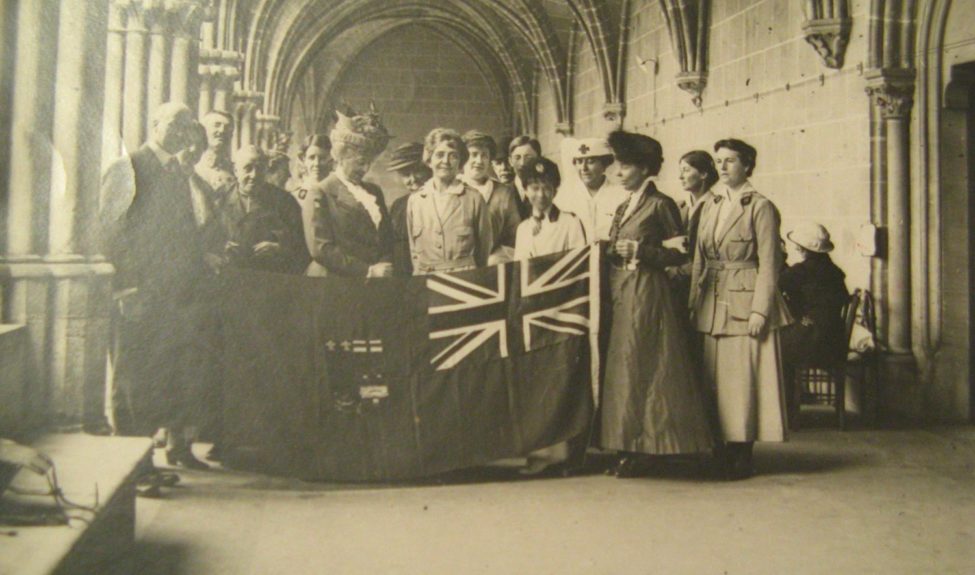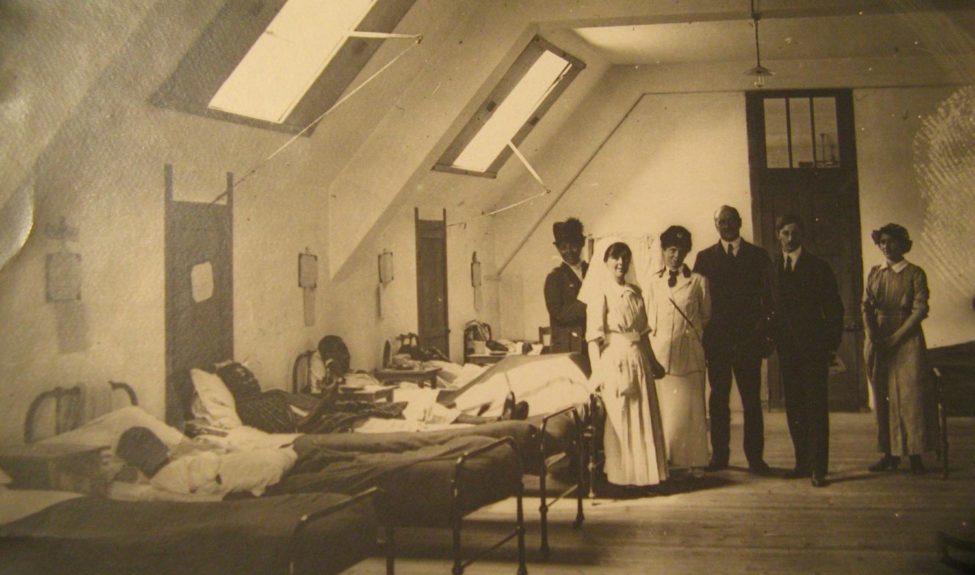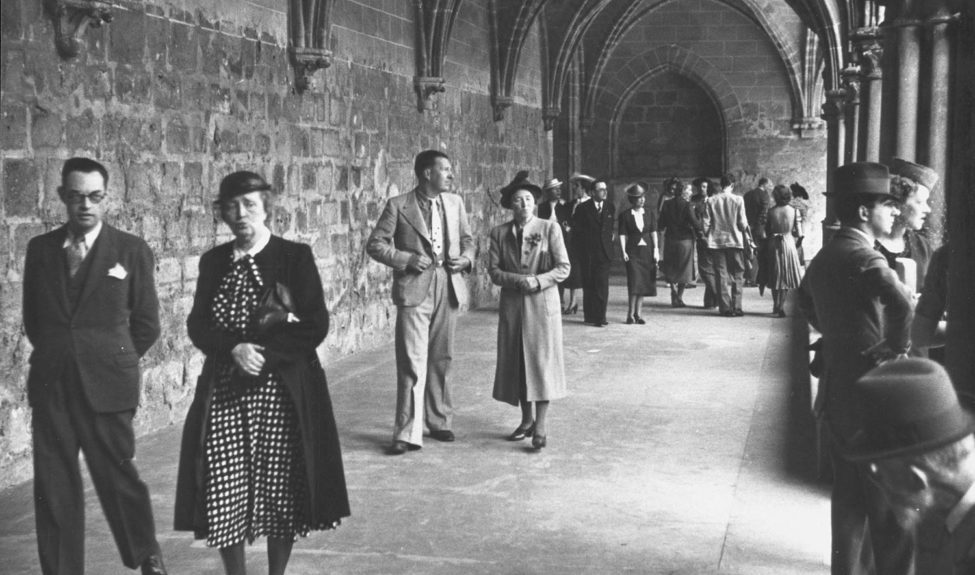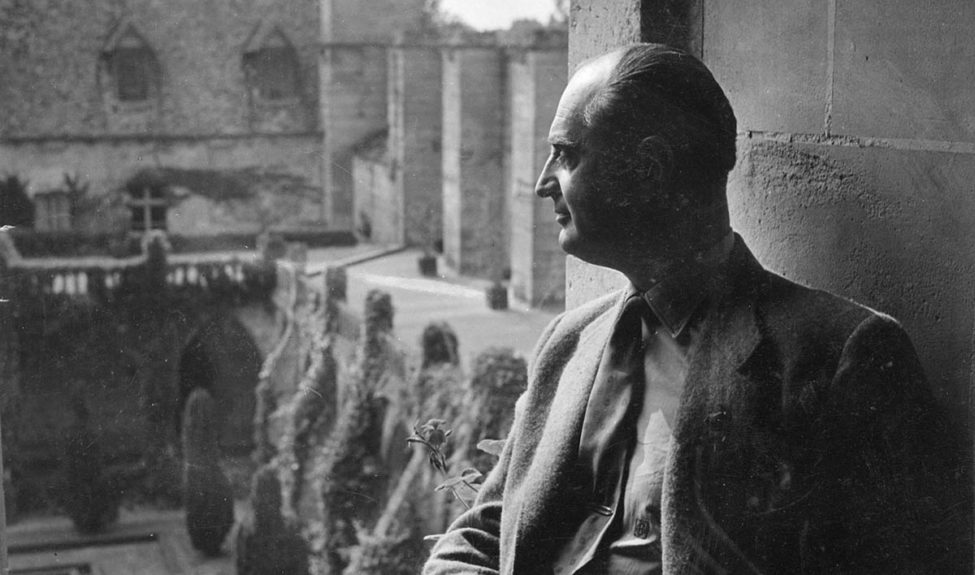“Royaumont, l’abbaye aux 1 001 vies”
[Le Figaro]
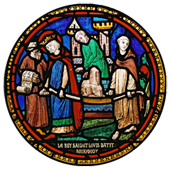
Un site d’exception à travers les siècles
Fondée en 1228 par le jeune Louis IX (futur Saint Louis) et sa mère Blanche de Castille, cette abbaye cistercienne connut un grand rayonnement au Moyen Âge.
Vendue à la Révolution, elle fut transformée en usine textile et l’église démantelée servit à la construction d’un village ouvrier.
L’abbaye retrouva sa vocation première en accueillant en 1869 le noviciat des religieuses de la Sainte-Famille de Bordeaux, qui entreprirent de la restaurer dans le style néogothique.
En 1905, Jules Goüin, président de la Société de Construction des Batignolles, acquit l’ancien monastère.
Son petit-fils, Henry Goüin, décida d’ouvrir ses portes aux artistes et intellectuels nécessiteux pour offrir le « loisir de méditer – éventuellement de créer – à ceux que trop souvent les difficultés matérielles de la vie contraignent à vivre dans des lieux dont la beauté et la poésie sont absentes ».
En 1964, le projet sera pérennisé sous la forme d’une fondation, la Fondation Royaumont (Goüin-Lang) pour le progrès des Sciences de l’Homme.
Niché dans un cadre apaisant et d’une beauté intemporelle, ce monument, classé monument historique en 1927, a donc connu plusieurs vies, successivement monastère cistercien, abbaye de cour, site industriel, noviciat, hôpital de guerre, résidence de campagne, avant de devenir un Centre Culturel de Rencontre. Il ne fut ainsi jamais laissé à l’abandon.
en savoir plus
Une fondation royale, chef-d’œuvre du gothique
Classé monument historique en 1927, plus grande abbaye cistercienne d’Ile-de-France, Royaumont est un témoignage exceptionnel de la vie monastique et de l’architecture gothique.
Ses bâtiments s’organisent autour d’un cloître aux dimensions remarquables. Accessible depuis le passage parloir reliant le cloître au parc, la salle du chapitre abrite aujourd’hui la Bibliothèque Henry et Isabel Goüin.
Le réfectoire des moines est l’un des rares exemples de réfectoire à deux nefs encore visibles en France. La structure aérienne de son architecture, aux colonnes élancées, et ses grandes ouvertures colorées par des vitraux rappellent la fonction liturgique du repas chez les moines cisterciens, très attachés à la fonction symbolique de leur architecture. À partir du XIXe siècle, il fut atelier, séchoir, chapelle et enfin salle de concert avec l’installation, en 1936, d’un grand orgue Cavaillé-Coll.
Le réfectoire des convers est une salle de trois travées voûtées sur croisées d’ogives, l’une des plus spacieuses de l’abbaye ; transformé en salle de bal, théâtre, cantine, dortoir, entrepôt, il est aujourd’hui ouvert à la visite au même titre que les anciennes cuisines des moines.
Traversé par un canal sur toute sa longueur, le bâtiment des latrines, l’un des derniers bâtiments de ce type conservé en Europe, témoigne de la science hydraulique et du souci de l’hygiène qui existaient au Moyen Âge chez les cisterciens. Aujourd’hui, au rez-de-chaussée se trouvent un salon pour les résidents, un bar-salon de thé et une salle de réception. À l’étage, des espaces ont été aménagés pour les concerts, les répétitions des artistes ou des séminaires d’entreprise.
Ils complètent les aménagements résidentiels réunis dans le bâtiment des moines, le plus vaste de l’abbaye avec 65 mètres de longueur et 23 mètres de hauteur.
De l’abbatiale, détruite à la Révolution, il subsiste des ruines romantiques composées de colonnes et de chapiteaux, au Nord de l’abbaye. Cet édifice a fait l’objet d’une reconstitution numérique qui permet de mesurer son emprise exceptionnelle au sein de l’abbaye.
La sacristie avec sa voûte en berceau brisé s’ouvre sur le transept Sud de l’ancienne abbatiale et sur le cloître.
Photos d’archives
L’abbaye de Royaumont, d’hier à aujourd’hui
1228 : pour répondre à un vœu de son père, Louis VIII, le jeune roi Louis IX fonde une nouvelle abbaye, qu’il confie à une communauté de moines cisterciens. L’édification s’achève en 1235 avec la dédicace de l’église. La grande taille de l’église et l’importance des biens concédés révèlent l’ambition du jeune roi qui en fait l’un des plus grands établissements au nord de Paris après Saint Denis.
1246 : Vincent de Beauvais, moine dominicain connu pour sa rédaction du Speculum majus, est le premier intellectuel accueilli à l’abbaye, où il occupe la fonction de lector.
Dès le début du XIVe siècle, l’abbaye commence à souffrir d’un manque de moyens pour entretenir ses biens temporels.
1549 : l’abbaye est cédée en commende, jusqu’à la Révolution, à des personnalités proches du pouvoir royal, tels Mazarin, Richelieu et la famille de Lorraine (1651–1728), qui, pour lui donner un nouveau lustre, la restaurent à grands frais. Presque tous les abbés commendataires tendent à confondre biens privés et biens monastiques, abbaye et villégiature.
1635 : Richelieu réunit tous les abbés des établissements cisterciens pour leur imposer un retour au respect strict des règles de l’ordre et leur fait signer « Les articles de Royaumont ». Dans le même temps, le roi Louis XIII fait donner à Royaumont le Ballet de la Merlaison, dont il est l’auteur et le chorégraphe.
1783 : le dernier abbé commendataire, grande personnalité mondaine, Henri-Eléonore-François Le Cornut de Ballivières, organise des fêtes fastueuses et fait édifier le palais abbatial sur le modèle des villas italiennes, inachevé lors de sa fuite en 1789.
1790-1792 : l’abbaye est déclarée bien national. Livres, archives, objets de culte et mobilier sont transférés dans des dépôts ou vendus. Les bâtiments sont achetés par le marquis de Travanet qui fait détruire l’abbatiale et transforme les bâtiments conventuels en filature.
1792-1860 : Royaumont est l’une des plus importantes industries de la région. La famille van der Mersch, qui la possède et l’exploite de 1815 à 1860, attire en villégiature les artistes et la bourgeoisie parisienne.
1864-1905 : l’abbaye est rachetée par les Pères Oblats de Marie-Immaculée de Marseille, puis confiée en 1869 aux religieuses de la Sainte Famille de Bordeaux, qui s’attachent à redonner aux bâtiments leur usage et leur forme d’origine. Elles entreprennent, sous la conduite de l’architecte Louis Vernier, d’importantes restaurations sur les bâtiments conventuels, qui allient l’esprit néo-gothique et le respect de la simplicité cistercienne.
1905 : la loi Combes sur les congrégations oblige les religieuses de la Sainte Famille de Bordeaux à quitter l’abbaye. Elle est rachetée par un grand industriel, Jules Goüin, président de la Société de Construction des Batignolles, créée par son père Ernest Goüin en 1846. L’abbaye devient la résidence secondaire de la famille Goüin.
1915-1919 : l’abbaye accueille l’hôpital auxiliaire n°301, dirigé par une équipe de femmes médecins et infirmières écossaises, « the Scottish Women ».
1927 : l’abbaye est classée « monument historique ».
1931 : Henry Goüin, petit-fils de Jules Goüin, épouse Isabel Lang. Ensemble, ils s’engagent dans un programme de restauration et d’aménagement des bâtiments – bâtiment des convers, couverture du cloître, réparation des charpentes du bâtiment des latrines, installation d’un orgue Cavaillé-Coll dans l’ancien réfectoire et suppression de la tribune, première restauration des anciennes cuisines, réfection des toitures de l’hôtellerie et du bâtiment des moines, installation du chauffage central – et font de l’abbaye un lieu où vont se retrouver artistes et intellectuels.
1936 : le 27 juin, un premier concert public est donné dans l’ancien réfectoire, qui annonce les futures saisons musicales.
1938 : le Foyer de l’Abbaye de Royaumont, lieu de travail ou de repos destiné aux artistes et aux intellectuels, est créé. Son activité est interrompue pendant la guerre. Elle reprend en 1947 sous la direction de Gilbert Gadoffre et devient le Centre culturel international de Royaumont (CCIR).
1949 : la bibliothèque de Paul Desjardins (provenant de l’abbaye de Pontigny) est acquise par Henry Goüin.
1953 : Le CCIR devient le Cercle culturel de Royaumont, qui sera dissous en 1968.
De 1953 à 1964: restauration des anciennes cuisines, du bâtiment des latrines, interventions sur la tourelle, le cloître, l’ancien réfectoire et le bâtiment des moines…
1964 : Henry et Isabel Goüin créent la Fondation Royaumont (Goüin-Lang), pour le progrès des Sciences de l’Homme, déclarée d’utilité publique par décret du conseil d’état du 18 janvier 1964 et y apportent en dotation leur propriété de Royaumont ainsi qu’un capital.
1971 : le Centre de Royaumont pour une Science de l’Homme est créé. Il quittera la Fondation en 1973.
1972 : Royaumont participe en tant que membre fondateur à la création de l’Association des Centres Culturels de Rencontre.
1977 : Henry Goüin décède le 24 février. Le 5 avril, la Fondation signe avec le département du Val-d’Oise une convention et élabore à partir de 1978 un nouveau projet culturel.
De 1976 à 1980 : poursuite des travaux de restauration du cloître, de l’ancien réfectoire et du bâtiment des moines, réaménagement de la maison d’hôtes…
1984 : création du Centre de la Voix, d’un centre de recherches et d’interprétation des musiques médiévales, du Centre littéraire, d’un Centre d’arts plastiques et d’un programme de recherche ethnologiques.
1988 : Isabel Goüin décède le 28 octobre.
De 1983 à 1992 : restauration des vestiges de l’abbatiale, du bâtiment des convers, du cloître, des anciennes cuisines, rénovation des 40 chambres et des galeries nord et ouest du cloître, rénovation du bâtiment des latrines et construction d’une nouvelle porterie…
2000 : le projet culturel est redéfini. Il diversifie les programmes musicaux, s’ouvre à la danse contemporaine, associe la poésie à des rencontres avec d’autres disciplines, lie plus fortement patrimoine et création.
2004 : création d’un jardin d’inspiration médiévale, le jardin des 9 carrés, conçu par Olivier Damée et Edith Vallet.
2007 : acquisition de la Bibliothèque musicale François-Lang.
De 1992 à 2010 : restauration de l’ancien réfectoire des moines, réfection du carrelage des anciennes cuisines, restauration des balustrades et des terrasses du cloître, restauration et ouverture au public de la Bibliothèque musicale François-Lang, création de 6 nouvelles chambres, restauration du jardin du cloître, restauration du comble du bâtiment des convers et création d’une nouvelle salle de répétition.
2010 : le projet culturel est recentré autour de la musique et du patrimoine dans le cadre de deux pôles principaux : le Pôle des « Programmes artistiques », qui réunit le Programme Voix, le Programme des Claviers, le Programme Voix Nouvelles, le Programme Musique orales et improvisées, le Programme de recherche et composition chorégraphiques, l’Unité scénique, le Grand Atelier, la Bibliothèque François-Lang, les Archives et la Bibliothèque Henry & Isabel Goüin et le Pôle de « l’Action territoriale et des publics », chargé de la diffusion des activités mises en œuvre par les différents programmes artistiques.
2014 : ouverture le 28 juin du Potager-Jardin, conçu par Astrid Verspieren et Philippe Simonnet, restauration et aménagement de l’ancien réfectoire des frères convers et signature le 3 octobre d’un contrat d’objectifs quinquennal (2014-2018) avec l’État, la région d’Ile-de-France et le département du Val-d’Oise.
2015-2016 : la Fondation Royaumont engage de très importants travaux de restauration de son abbaye, de rénovation et d’extension de son équipement résidentiel.
2016 : adossement de la Médiathèque Musicale Mahler (Paris) à la Fondation Royaumont
2020 : restauration des façades et des toitures du réfectoire des moines et de l’ancien chauffoir ; restauration des menuiseries extérieures ; isolation des combles ; remise aux normes des installations électriques.
2022 : restauration de l’ancienne grille médiévale retrouvée dans un canal de l’abbaye à la fin du XIXe siècle, et classée « Monument Historique » en 1934. Une datation au carbone 14, réalisée à l’occasion, a confirmé qu’elle avait été fabriquée à partir d’un chêne abattu entre 1220 et 1271.
